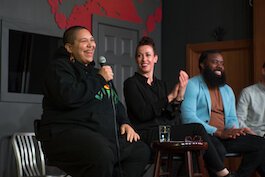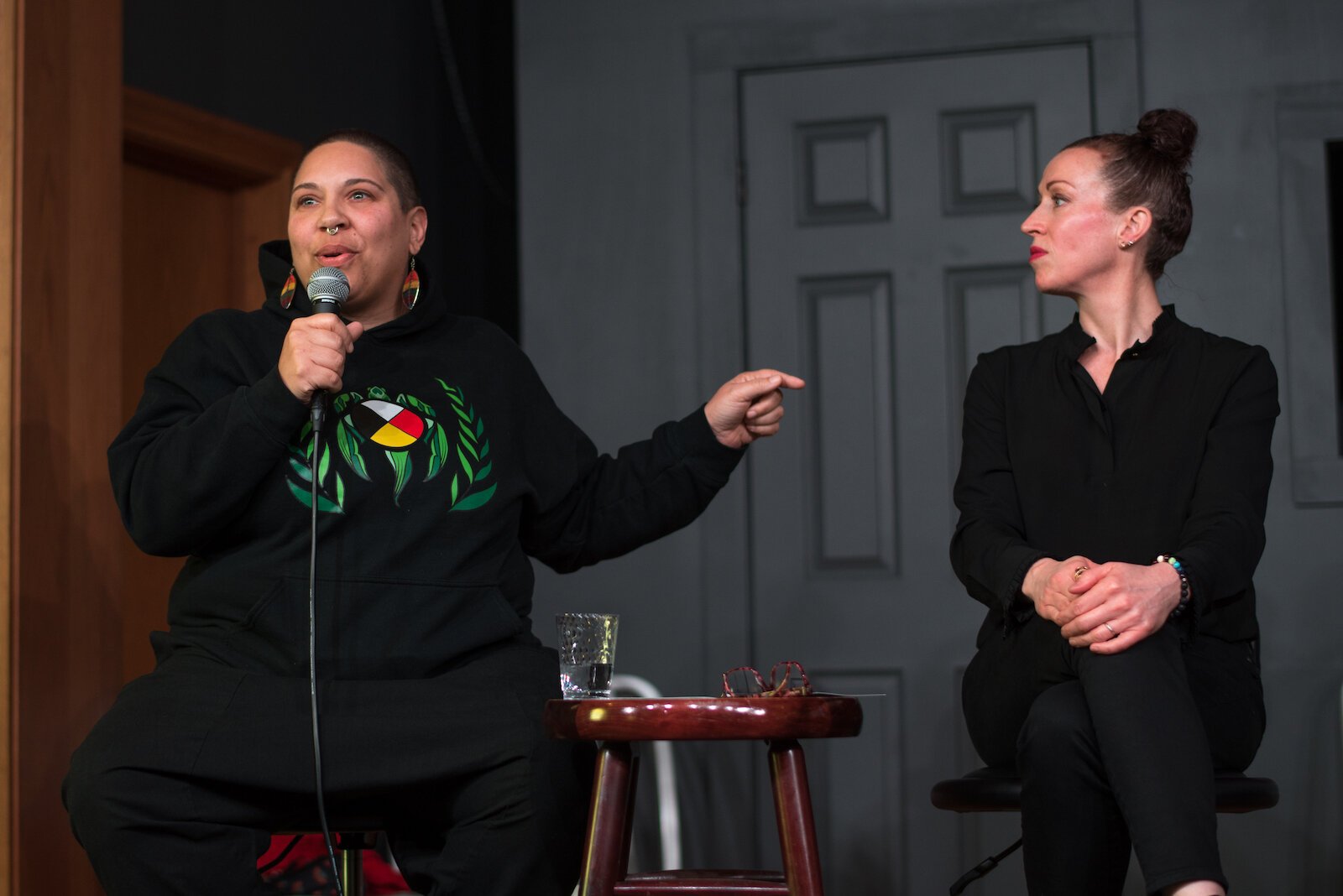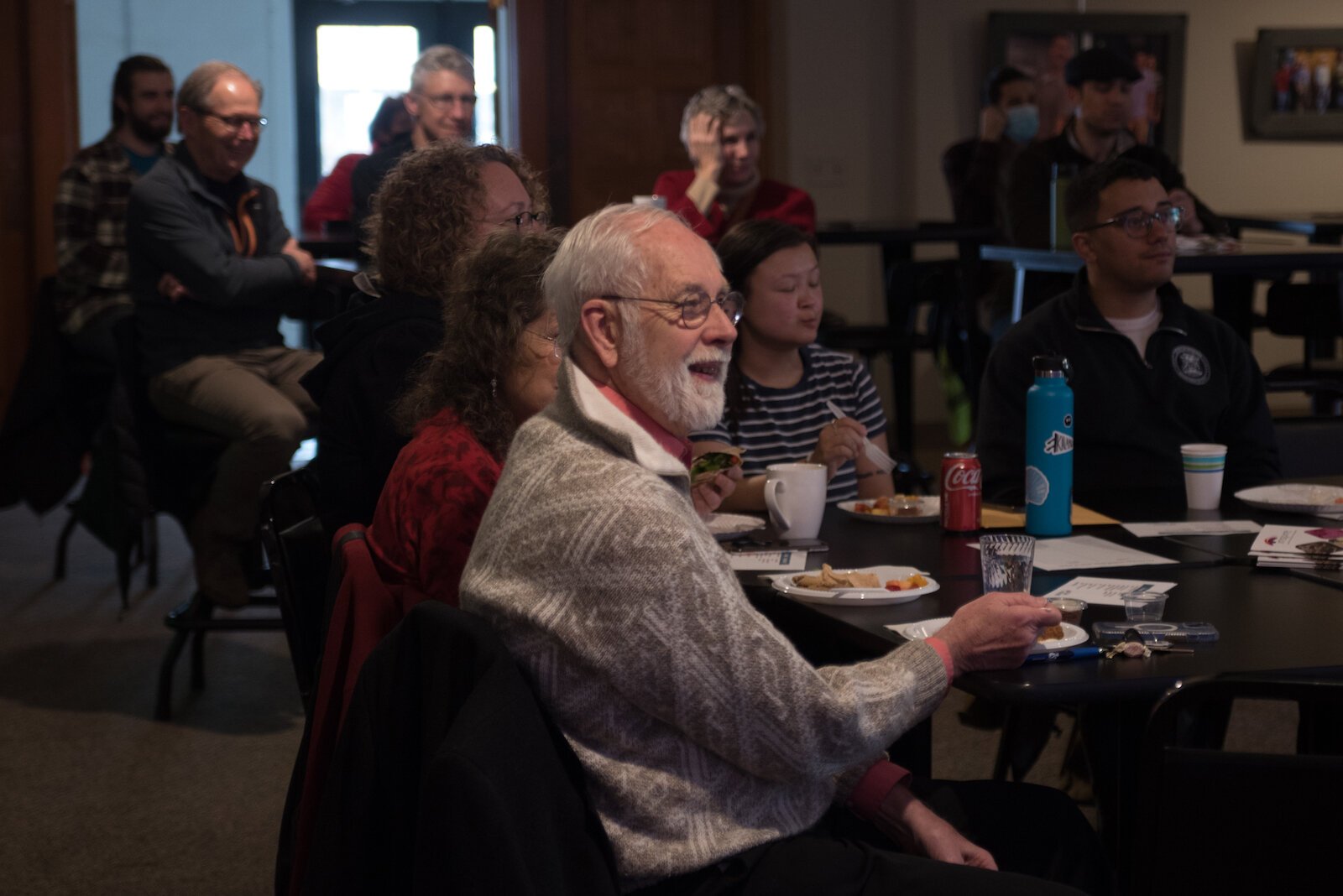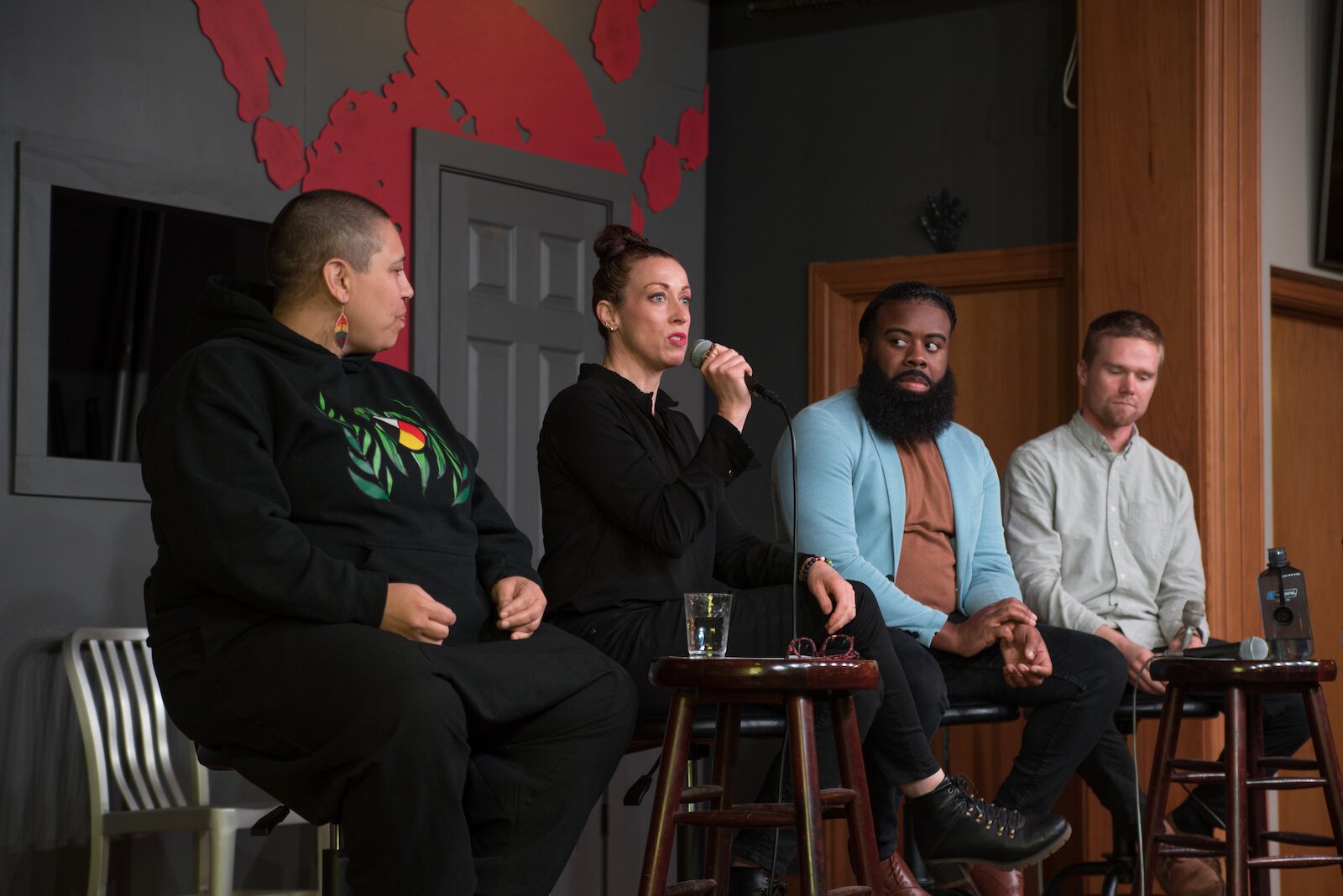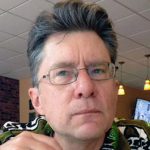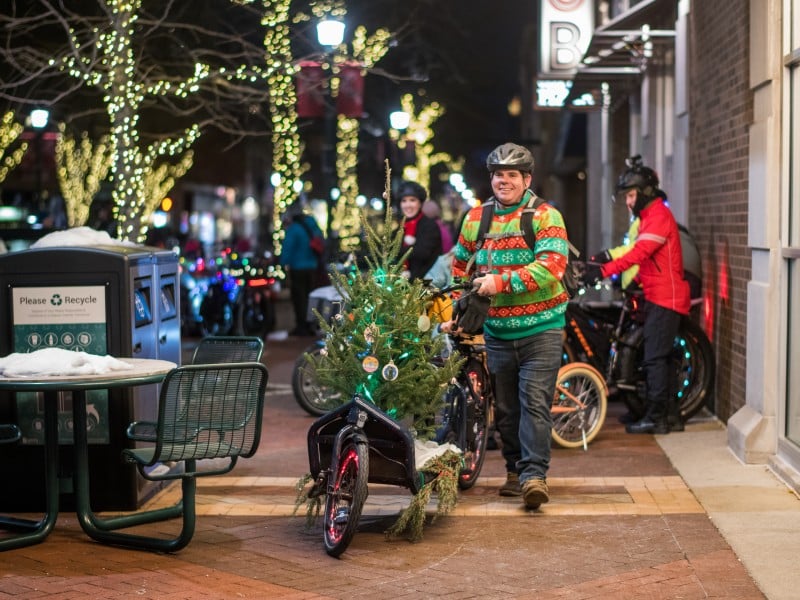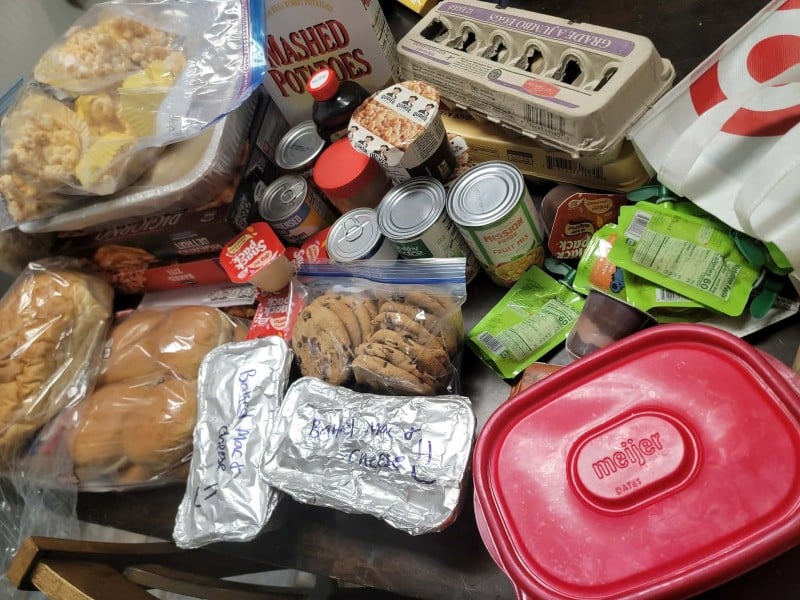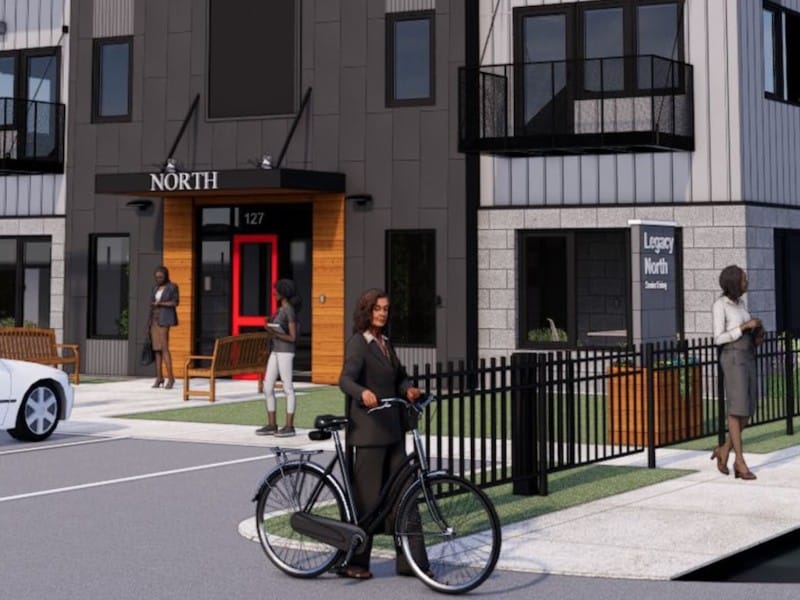Editor’s note: This story is part of Southwest Michigan Second Wave’s On the Ground Kalamazoo series. Southwest Second Wave is partnering with the Kalamazoo Lyceum to lift up conversations about topics that are vital to our community.
March’s Kalamazoo Lyceum, the second gathering of this bi-monthly, community conversation, took place at the Kalamazoo Nonprofit Advocacy Coailition and explored the concept of our city’s culture. Some hard questions and hard answers came out of the panel discussion.
The main, hard questions: Does Kalamazoo have a culture? Such as some specific Kalamazoo flavor, music, or art? Do the citizens rejoice in some festivities, and shun others?
And what is culture? Matthew Miller, Lyceum organizer and moderator, says that when he was thinking of this topic, he wanted to look at the concept of “a shared story. And in Kalamazoo, do we have a shared story?”
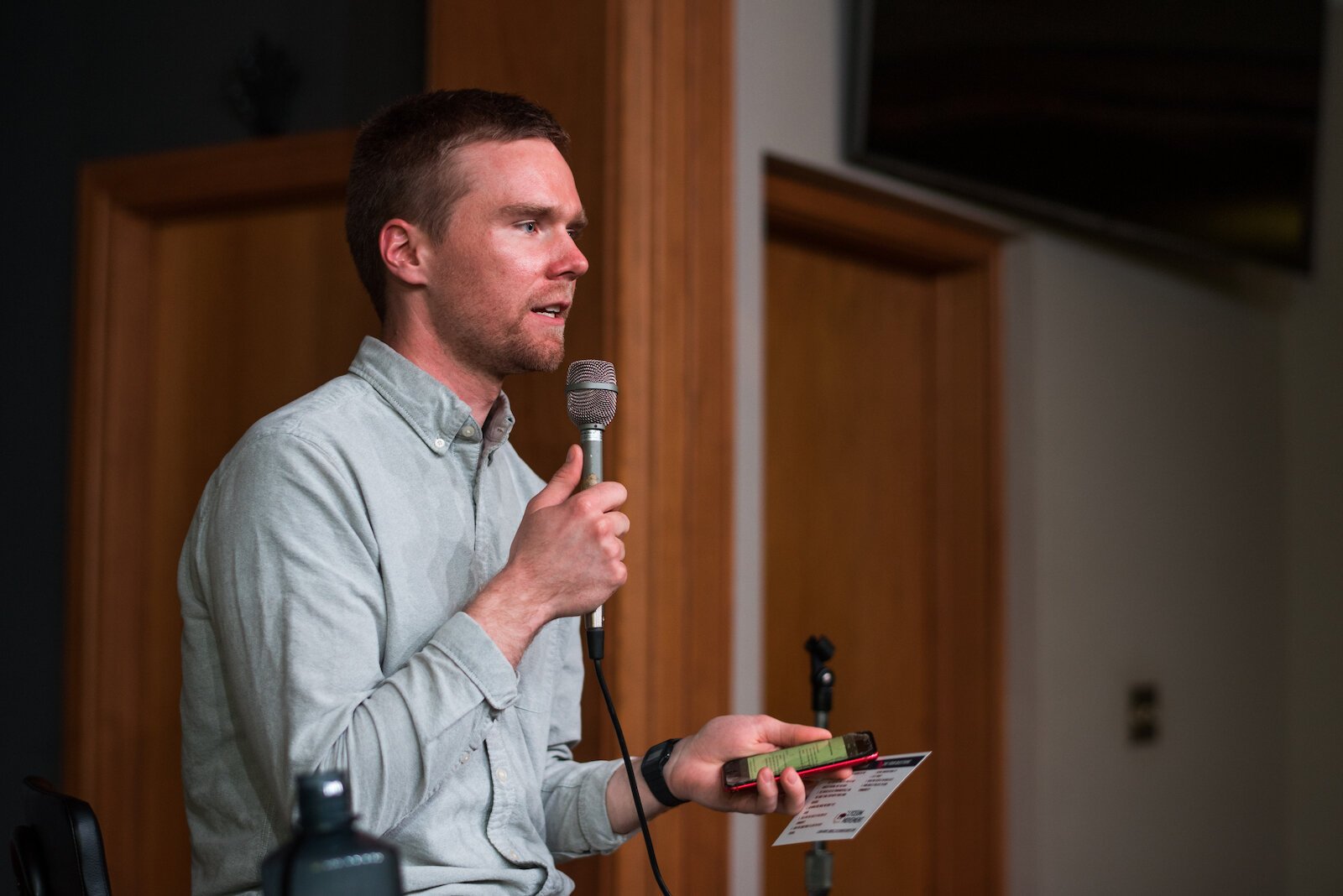
At that moment, panelists Kama Mitchell and Daniel May give each other knowing, sardonic grins.
Miller continues, “I think of Wendell Berry talking about how important it is for small towns, having consistency, having intergenerational commitment to this story of where do we come from, where are we going, why are we doing what we’re doing. Do you feel that we have that in Kalamazoo?”
Mitchell says closely into her mic, “No.”
“I have a joke. If you don’t like beer or folk music, this is not the town for you,” she says. There’s some laughter from the audience.
“I don’t like beer, I like some folk music,” Mitchell says. “It’s just a joke,” she says, but for some, it seems like the city’s nightlife choices are “you go to the brewery and you listen to folk music. Sometimes rock.”
That might feel like a shared culture for those who participate in it, but a shared story for all of Kalamazoo?
“I’d say no, we don’t have a story, because of segregation,” Mitchell says. “We don’t have a common story.”
DIY culture
The main theme that came from the Lyceum’s panel is, Kalamazoo has many cultures, and they’ve been divided for a long time.
One connecting thread in the panel, though, is that if the culture you want to see is not represented, you’ve got to DIY, do it yourself.
Mitchell is multiracial — there are “16 ethnicities in my DNA,” she says — born in Marquette, grew up in a large family of blueberry growers near Bangor. She lived in Dallas, New York, California, and the Caribbean, and has interacted with many different cultures.
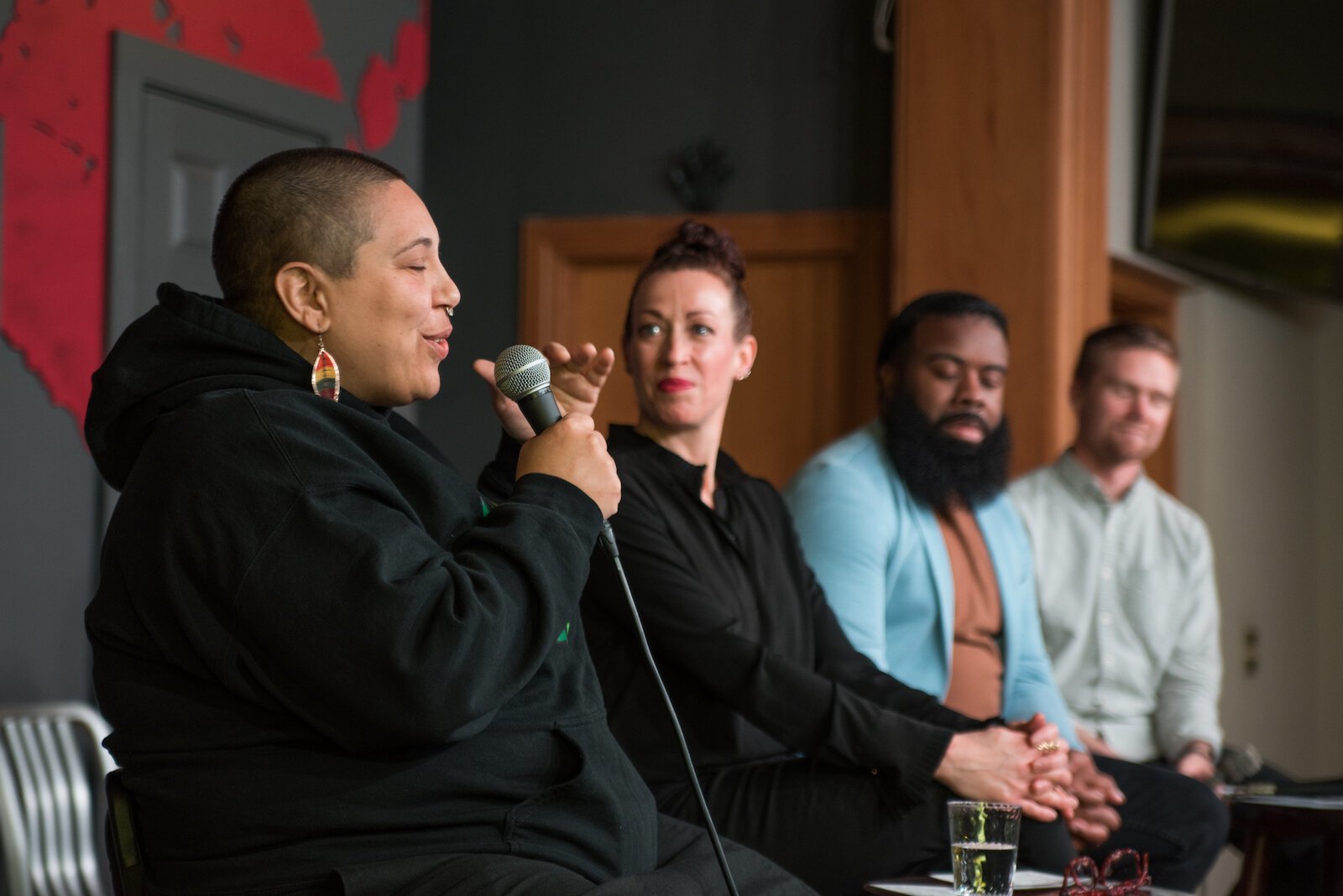
She found stability in Kalamazoo. Here she started a West African dance group, began practicing yoga, and learned about being a birth doula. Finding herself “the darkest person in the room” in yoga classes, she formed a group for Black and Brown women to learn yoga and African dance.
That led to establishing her nonprofit Rootead.
The idea for the organization came from “my birth work mentor, who was like, ‘just make it all about yoga, dance, and birth.'” Mitchell says her response was a “Really?” But she pushed for it, wrote grants, and faced a lot of rejection until she was able to start Rootead in 2015.
May grew up in East Cleveland, Ohio, and Grand Rapids. He came to Kalamazoo to major in management and finance at Western Michigan University, and intended to graduate and take his degree elsewhere, but stayed instead. He “fell in love with the community,” he says.

But something was missing, so he organized a Juneteenth bar crawl in 2018, which led to his event, Sunday Skool, which brought hip hop and R&B downtown, and then Afrofest, a celebration of Black culture at the Kalamazoo Institiute of Arts.
Late last year May opened his own bar on Kalamazoo Ave. Downtown, Dabney & Co., a “Black culture bar,” he says, not a “Black bar.” May wants his establishment to “embody what Black culture is. We recognized that the majority of the time, when people engage in Black culture, specifically during Black History Month, it is always about the past and who we were then, and not celebrating the beauty of who we are today.”
The third panelist, Jennifer Hudson-Prenkert, came to Kalamazoo as a WMU dance major, left for a while, and “got sucked back in” to become a dancer with Wellspring/Cori Terry and Dancers for 12 years. She then became active in local theater, at the Kalamazoo Civic Theatre and Farmers Alley Theatre.
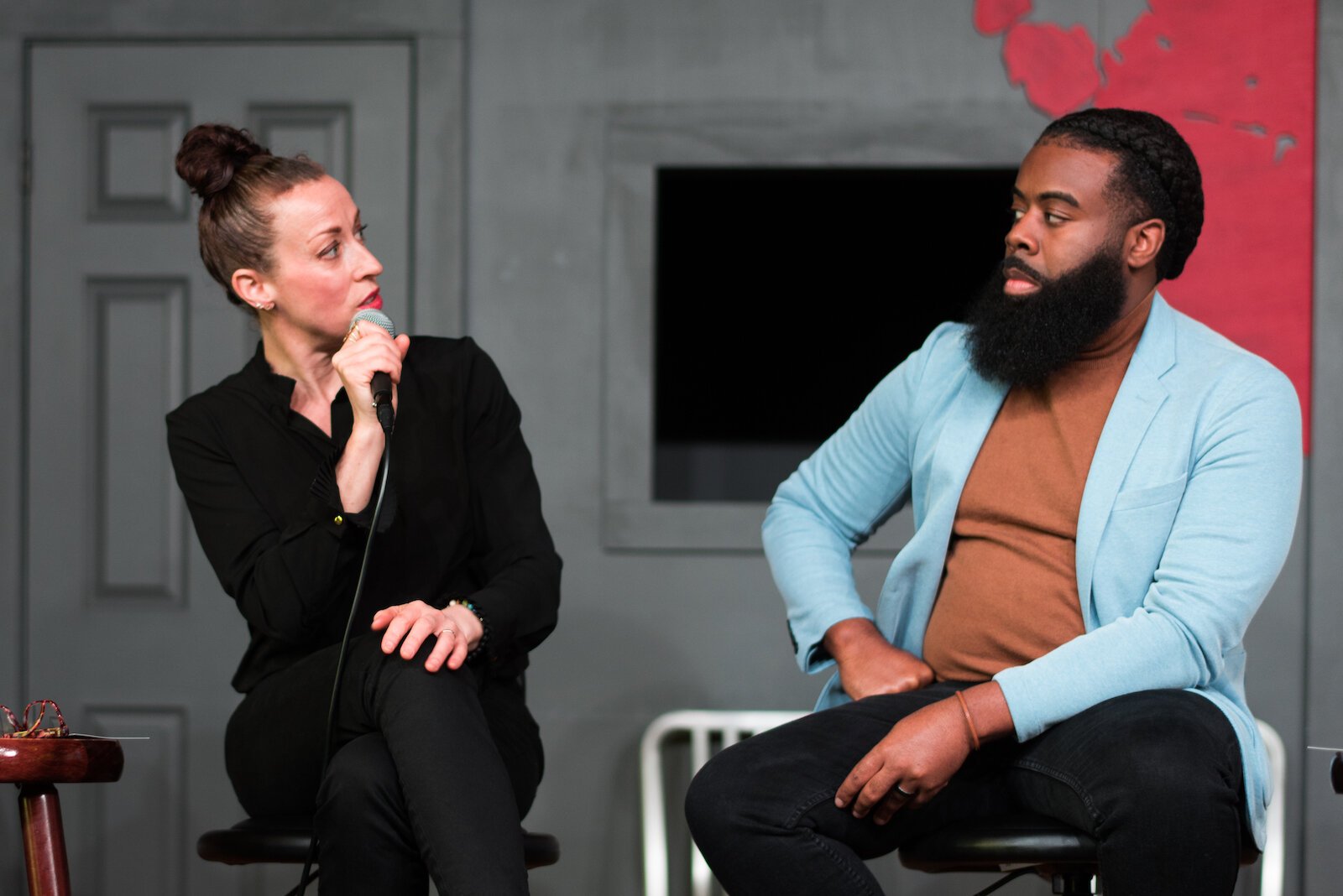
Hudson-Prenkert then segued into music booking at Arcadia Ales, up until the brewpub closed in 2019.
She says that when she was a WMU student, it seemed there was music happening downtown “every day of the week,” at long-gone establishments like Club Soda, Bourbon Street, and Rick’s American Cafe — “I’m dating myself, I don’t care.”
But since COVID, maybe before, “it feels that something isn’t moving.” There’s a lack of connection with music and downtown, she says.
So she founded Sounds of the Zoo, a free music festival. The first festival last September had 54 bands throughout one week performing at various downtown locations. Hudson-Prenkert sought a diverse variety of music, and making it free was the best way that she could think of to encourage diversity and inclusion, she says.
What is culture?
The panel showed that the question of culture is ultimately a question of a group’s or an individual’s perspective.
May says, “For me, culture, as a Black man, it’s flavor, it’s soul, there’s a rhythm you can’t explain. It’s the laughter in the room.”

He then explained why he’s not comfortable going into majority-white establishments. “There’s a collective feeling that’s felt, as a Black individual, when you’re out at a restaurant… and there happens to be another Black table, and they’re laughing — you get an anxiousness, like ‘God, they gotta quiet down because they’ll think that all of us are angry and loud!'”
If a Black customer gets kicked out, “we feel responsible because a majority of the time, especially in this community, if that Black guest gets kicked out for whatever reason, being drunk or that type of behavior, then the next time that Kama (Mitchell) comes in, they respond to her different. Her service is different,” May says. “White guests can fight at this same establishment every week. It’s just seen as a part of business.”
He opened his bar to give everyone a place to be themselves, May says. “Culture is safety. It’s being able to be yourself. It’s one of the things I take pride in at Dabney & Co. No matter what you look like, your age, anything else, people are as loud as they want to be. I do not stop them. I actually encourage it.”
Mitchell says, “Culture, to me, is nature. I feel like colonization has stripped away the remembrance of us being part of nature, one with nature, and one with each other.”
She remembers being six when her grandmother brought her and her cousins in their blueberry truck to Kalamazoo, and “we would play in the fountain at Bronson Park.”
Her grandmother told them about the mound in the park, and how it was a sign of the indigenous people who lived there.
“She’s not Native, but my grandfather is of Cherokee decent, and she was telling us about the mound, and how sacred it was, and why it was there, and why we’re not to touch it. And that stuck with me as a 6-year-old, that we are playing on sacred ground? I was just so enthralled to the point that I just dove into Native American culture as a child because I wanted to learn more.”
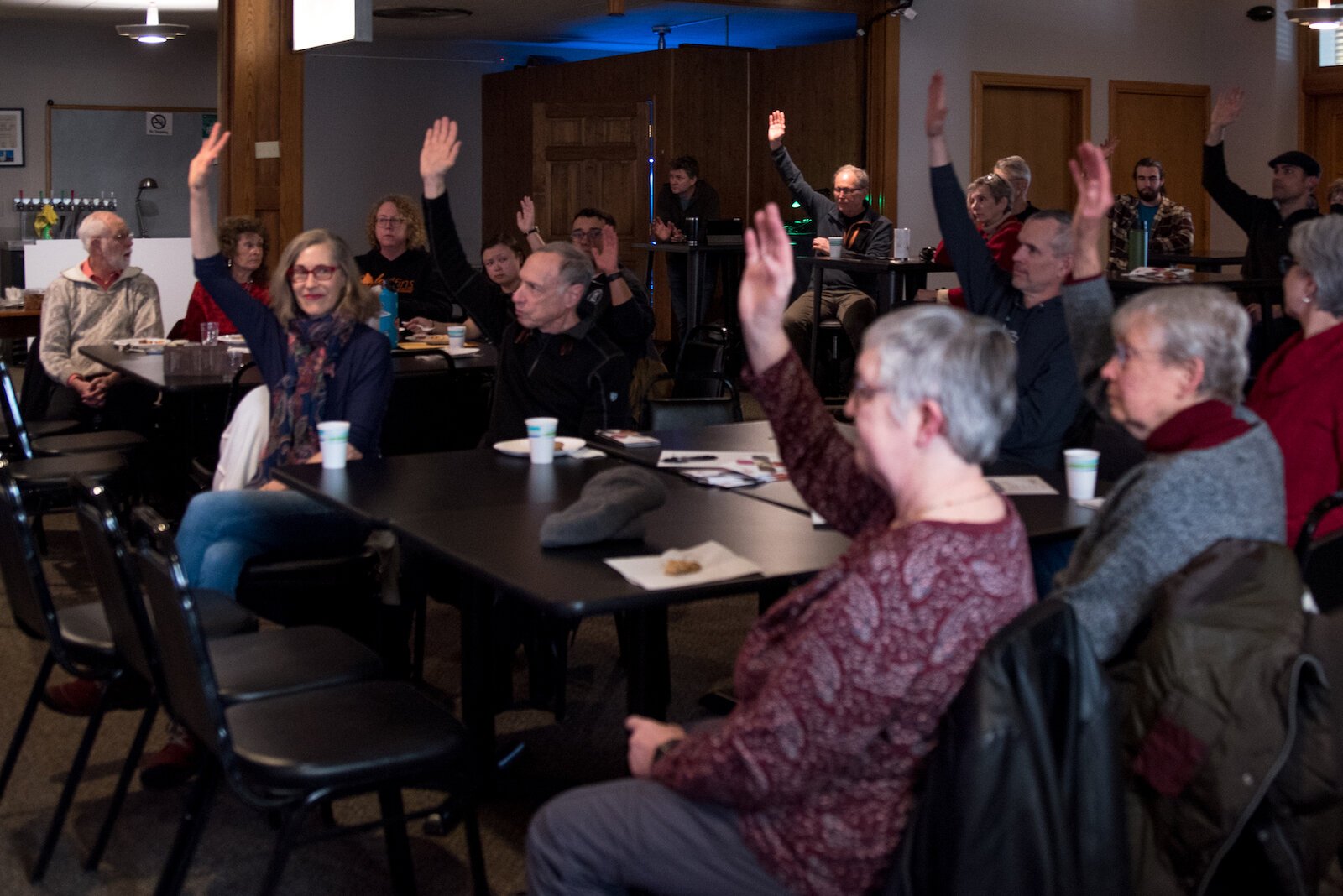
She points to the design on her sweatshirt, a yellow, red, black, and white circle, representing the races, on an indigenous design of Turtle Island, representing the Earth. “That’s culture to me, all of us coming together for the same purpose of having a healthy clean community that we’re raising our children in.”
Hudson-Prenkert says that culture comes out of community. In Kalamazoo, “there is community, but there is segregation, and it’s not always talked about. And it is awkward, and it is hard to bring up.”
She emphasized that her events have diverse music and promote inclusion. “The only way we can do it is by doing it together, and having these moments and these places to celebrate and have conversation. And be honest, and having uncomfortable talks sometimes.”
Two Kalamazoos
On the concept of a shared story, May says “I have absolutely no idea what that is… I do know there are a lot of people who care and are emotional about this community, who are committed to growing and changing. But I do know we have, for a lack of better words, a lot of old dinosaurs through companies and organizations who control a majority of the city, who are fine with the oppression.”
He says, “Kalamazoo has two realities and two cities. The one that we profess to the world, and the one that we actually are. To the world, we are the most philanthropic city in the country with the number of nonprofits we have and donation dollars.”
Yet, “somehow we have one of the largest populations of individuals who are unable to survive in this city. From a housing standpoint, economic standpoint, wages, everything across the board,” May says.
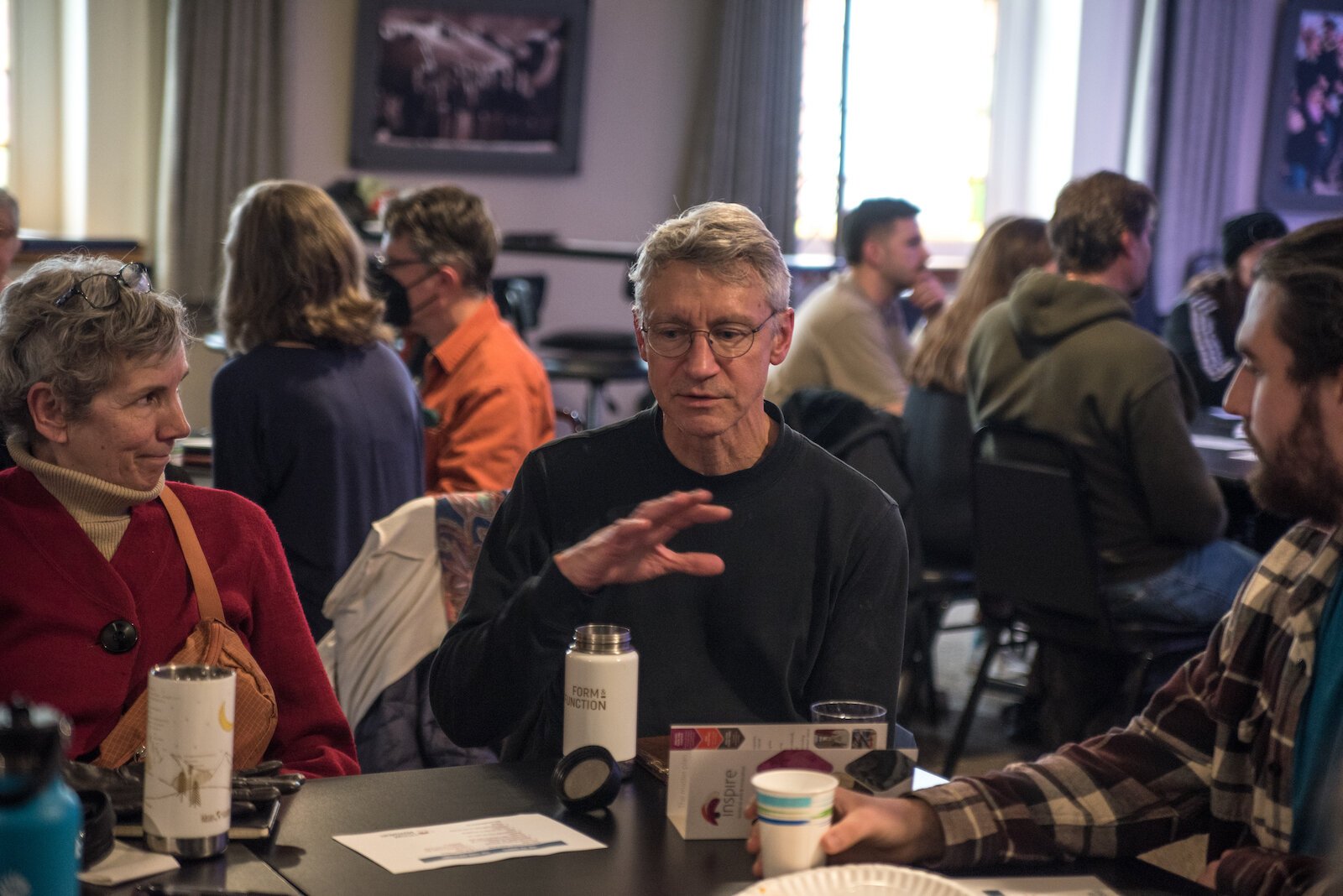
Officially, diversity and inclusion are encouraged, May says, but he’s noticed he’s “living in a city of 20,000 Black people and only seeing maybe ten of them in the downtown next to the historically Black neighborhood.”
That would be the Northside. “We can talk about diversity in this community, and how we’re growing, and so liberal and so progressive, but Black people live in the same community as they did in the 1930s, through redlining.”
May acknowledges that he’s had the privilege to get a degree and open his own business. Sometimes he was mistreated in ways that he decided to ignore “because I knew my goal and the future was more important than my pride today… I can’t ask that for every single person in this community, or other Black men and women who look like me, that they should subjugate themselves to the exact same injustices.”
He adds that he knows Black doctors, PhDs, businesspeople, and others in positions of privilege who also avoid downtown, that they’d rather go find arts and entertainment in Chicago or Detroit.
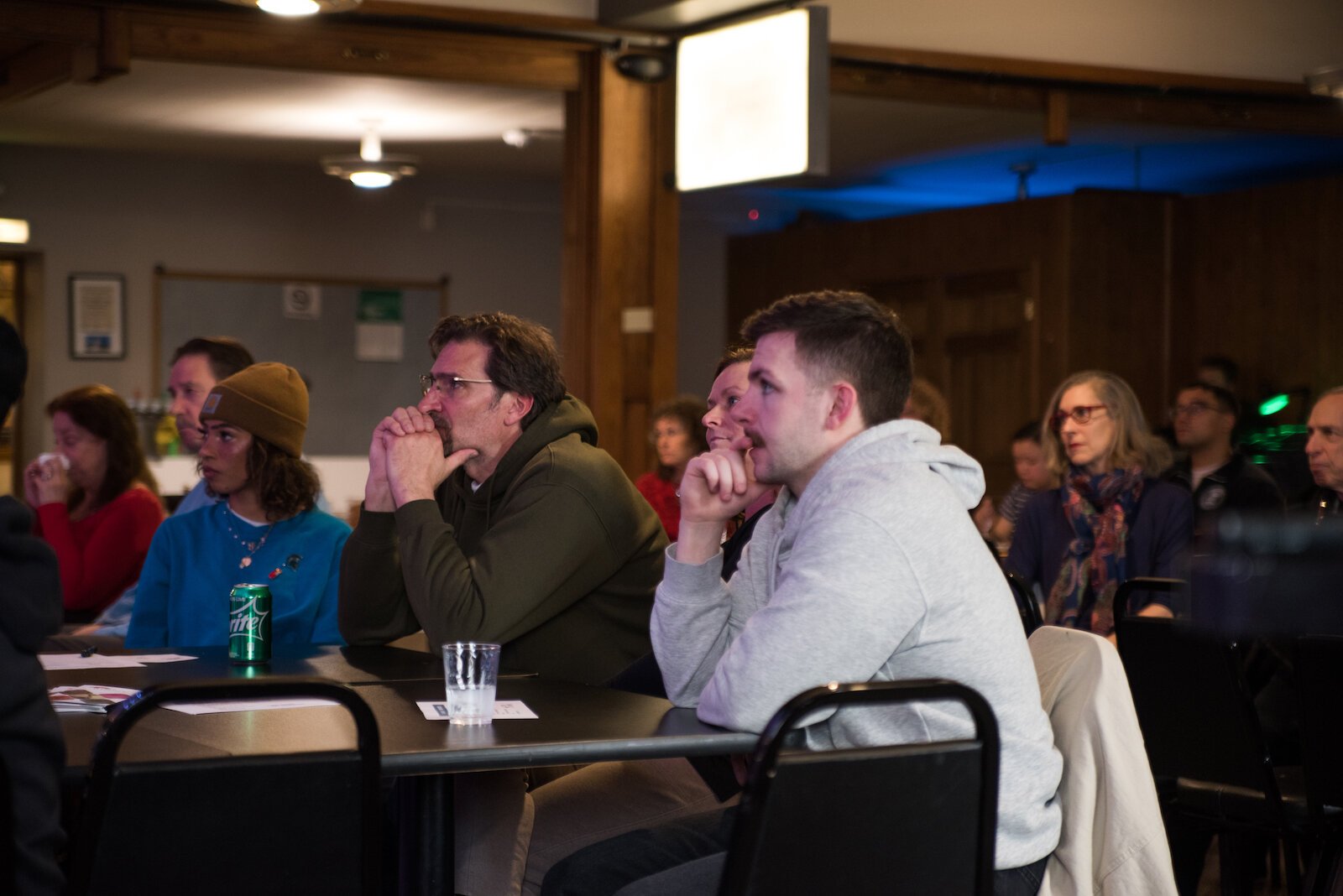
Mitchell says her story is a “flipside” to May’s. “I don’t have a college degree, I did not come up with a whole lot of privilege….” When she moved to Kalamazoo, “I stayed with my kids in a domestic shelter because their father was not a very nice man.”
Mitchell says, “I am an example of pulling up my bootstraps, using my half-white privilege, using my relationships, being tenacious to get where I’m at. I’m 48 years old and I just bought my first house.”
She is being “tenacious” to work from “the bottom up” to improve her corner of the culture.
Now, she’s looking for the next generation to take up the work. “I’m tired, I’m really tired.”
Miller underlined the fact that a large part of Kalamazoo’s population simply can’t participate in cultural events. His day job is with a local organization that helps the unhoused. “I’ll work with folks who are living out in the streets or the woods, and then I’ll go get a drink at night or go to a concert.”
Trying to tell a new story
Hudson-Prenkert says, “I think our story’s being defined, I don’t think it’s clear.”
For her, “music is a way to my heart, music is a healer, and I feel –”
Mitchell says to her, “A universal language.”
“Exactly,” says Hudson-Prenkert.
In February, Sounds of the Zoo teamed with HOPE thru Navigation to stage a benefit concert for the Tiny House Pilot Project.
“I had a young hip hop artist, I had Samuel Nalangira who’s from Uganda, and I had The Skeletones who’re one of the longest-running R&B band in Kalamazoo,” she says.
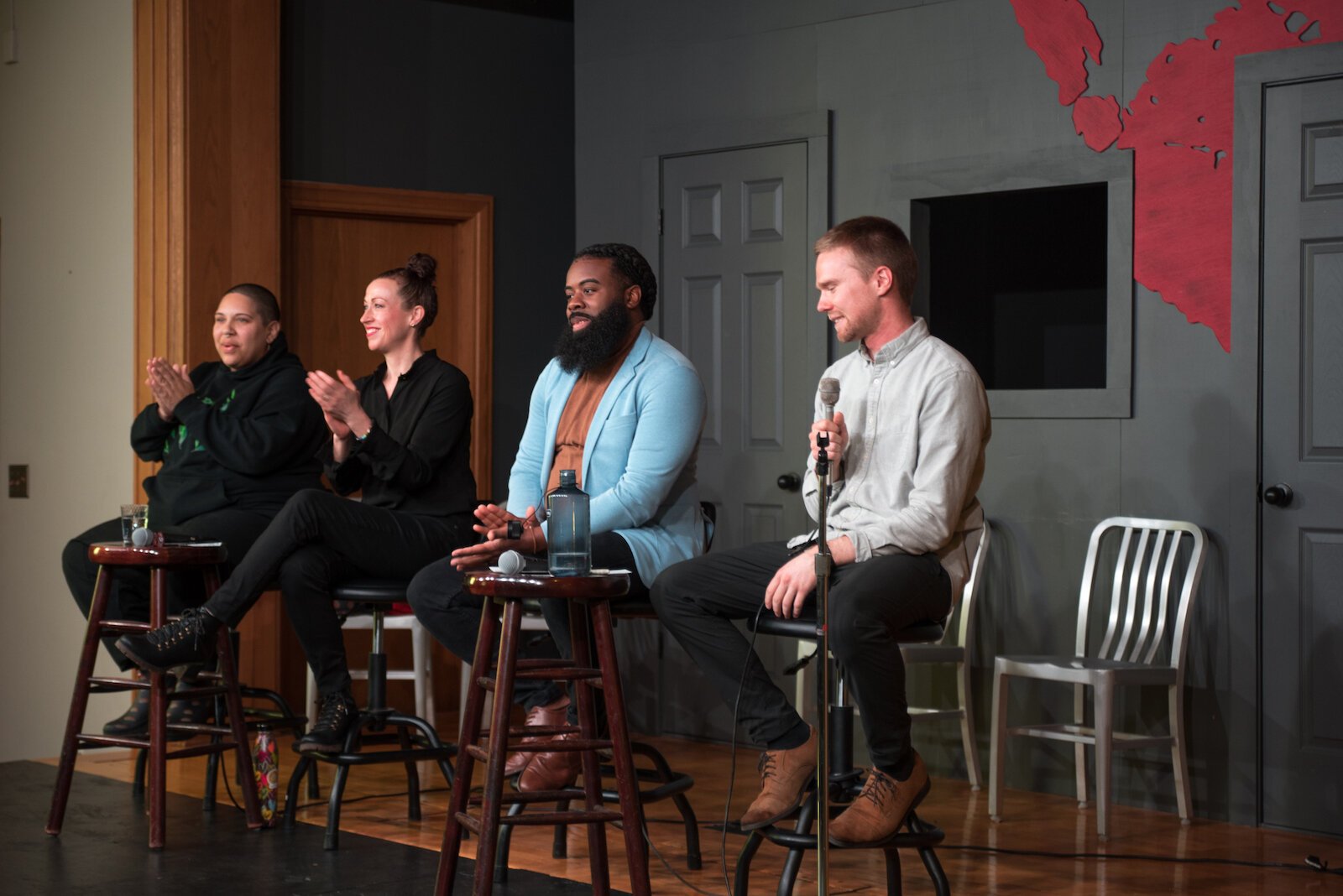
She held the event at Bell’s Eccentric Cafe “to try to open up some doors because I don’t know how else to do it but through music. And as a white woman, I can’t speak in the fabrics of what your life is and how you feel….”
Hudson-Prenkert hopes Kalamazoo can move forward, bring all to the “celebration, having the food, the music, the dance that’s right here.”
“I think we need to tell a different story,” she says, and need to “shift the old system that’s been run a certain way, with the money,” referring to the money coming from the foundations that support a lot of the arts in Kalamazoo. “I mean, we are grateful for the money, but not in the way it’s been. It’s not fair, it’s not diverse. I’m a middle-aged white woman, I’ve hit a lot of walls myself, and you can’t tell me it’s fair,” she says. “I think we’re losing a lot of people in telling this new story, by making it harder.”
Hope
To close out the discussion, Miller asked the panelists what gave them hope.
“This gives me hope right now,” Hudson-Prenkert says referring to people coming out on a Saturday afternoon to have an honest discussion about their community.
May says the diverse variety of people coming to his bar gives him hope, “the number of people who enjoy themselves,” at Dabney & Co., “seeing so many people who look so different…. people who’ve hung out for hours, who’ve engaged in the culture, who’ve asked the questions.”
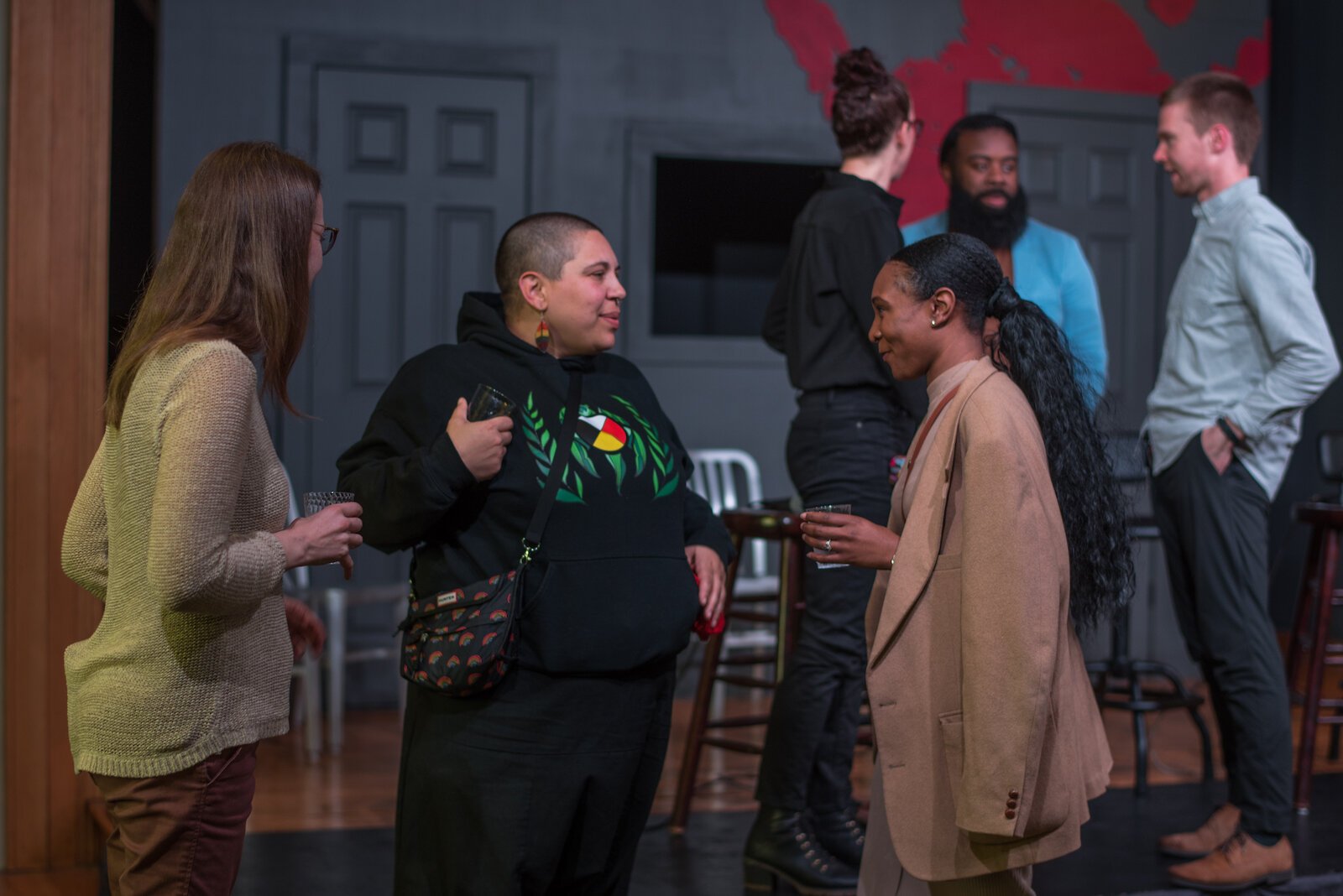
Mitchell says she’s seen babies born with doula assistance grow to attend Rootead’s dance classes, then join their dance troupe. “You see this whole family be with us for years, that gives me hope.”
She continues, “Seeing youth thrive as they grow, that gives me hope. Because they are our future, cliche as it is. We have to set up something that’s worth them staying in Kalamazoo for.”
The next Kalamazoo Lyceum will be in late May (date TBA) at the KNAC Building. The topic will be nature and the environment, Miller says.
“What does Kalamazoo’s natural environment look like? What does it mean to us? What do we owe it?”
For further information, see the Kalamazoo Lyceum Facebook page,

